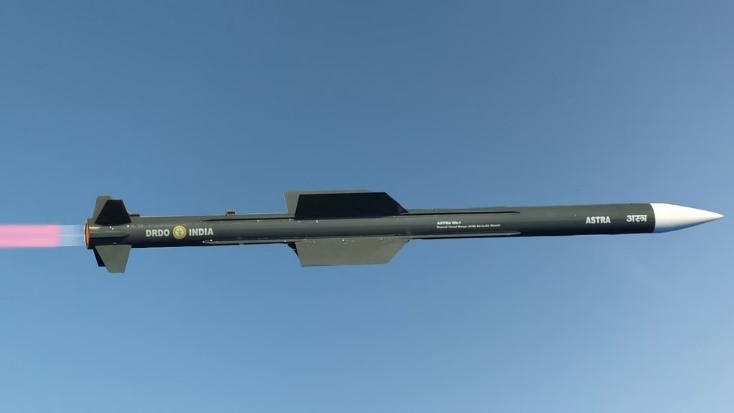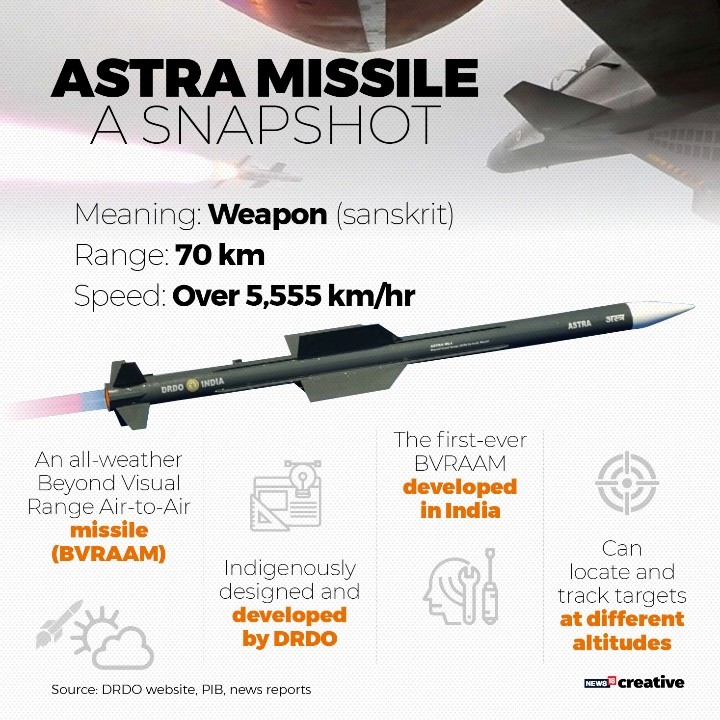Free Courses Sale ends Soon, Get It Now


Free Courses Sale ends Soon, Get It Now



Disclaimer: Copyright infringement not intended.
Context
History

Astra Missiles
Astra Mark 1
Astra Mark 2
Now work will be started on Mk3 version with range of 500km.
READ ABOUT TEJAS PROGRAM: https://www.iasgyan.in/daily-current-affairs/light-combat-aircraft-lca-mk1
|
PRACTICE QUESTION Q. Consider the following statements with reference to Astra Missile: 1. It has Electronic Counter-Countermeasure (ECCM) capabilities. 2. Astra is an Indian family of all-weather beyond-visual-range air-to-air missiles. 3. Astra Mk1s can attack targets flying at speeds of up to Mach 1.4 at a distance of 510 kilometers. How many of the above are correctly matched? A) Only 1 B) Only 2 C) All 3 D) None Answer: B) Only 2 |
https://www.indiatoday.in/india/story/tejas-sucessfully-fires-astra-missile-2425513-2023-08-23
© 2024 iasgyan. All right reserved